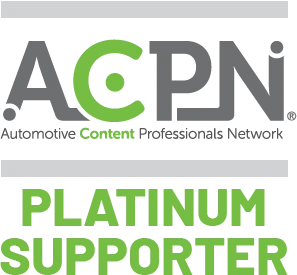
ACPN 2024
Connect with APA for ALL Catalog Solutions
May 5 - 8, 2024, Hyatt Regency, Chicago.
ROHS
The Restriction of Hazardous Substances (ROHS) directive was adopted by the European Union (EU) to restrict the use of certain hazardous substances in the production of electrical and electronic equipment (EEE) due to the increasing volume of waste electrical and electronic equipment (WEEE). The regulation was adopted in February 2003 and the ROHS 1 directive has been in effect since 1 July 2006 and was later replaced by ROHS 2 in July 2011. By 2015, with amends, ROHS 3 came into effect. This directive overall prohibits the use of 10 hazardous substances [lead, cadmium, mercury, hexavalent chromium, polybrominated biphenyls (PBB) and polybrominated diphenyl ethers (PBDE), bis(2-ethylhexyl) phthalate (DEHP), butyl benzyl phthalate (BBP), dibutyl phthalate (DBP) and diisobutyl phthalate (DIBP).
Objectives of ROHS
Safety
Inhibit the use of hazardous substances for EEE goods production which could impact both human health and the environment.
Alternatives
Provide guidance for the substitution of prohibited substances with safer alternatives.
Recyclability & Disposal
: Promote EEE product and their component recyclability. The directive also regulates product e-waste treatment to reduce the volume of disposal
Competition
Enhance competitiveness and fair trade in the EU electrical and electronic equipment and its related industry.

Regulatory Impact on Business
Any business that manufactures, distributes, or imports EEE products and those involved in the upstream supply chain process must ensure compliance with both product and any component they may have sourced to complete the manufacturing process. The regulation is enforced by the EU member states which coordinate their efforts through regular meetings of formal Administrative Cooperation Groups (AdCos).
Unless specifically excluded, all products with electrical and electronic components are required to comply with these restrictions. Failure to comply with the regulation could result in
- 1. Products banned from entering/being sold in the EU market
- 2. Hefty Penalties / Prosecution.
REACH implementation challenges

RoHS-compliant design
This presents challenges in terms of design and management, including the decision to either redesign existing products for compliance, render them obsolete, or create new products free of hazardous substances. It necessitates an extensive review of the bill of materials (BOM) for current products, impacting costs and marketing.
Establish lead-free assembly and inventor
Organizations must decide how to structure their assembly based on product requirements owing to the RoHS directive. The traditional Tin-Lead soldering for PCBs (Printed Circuit Board) has been replaced with a "Lead-Free" alternative. This sometimes requires separate assembly lines for RoHS-compliant and non-compliant products. Compliance also extends to product components, leading to complex inventory tracking and management processes to handle lead-free and lead-based components. This can be costly and time-consuming, especially for organizations with multiple locations across different countries


Comprehensive Due–Diligence Documentation
This directive requires the collection, evaluation, and storage of due diligence documents of the components from its suppliers
This documentation must comprise of
- 1. Certificate of Conformance to the RoHS Directive (CoC),
- 2. Materials Declaration that lists down the % composition of the component substances
- 3. Chemical laboratory test data, that validates the documentation.
Auditing both product and component supply chains
As a part of EU RoHS due diligence the product and component supply chain must be audited thoroughly using chemical testing. This chemical testing is necessary to ensure that non-compliant components don’t get integrated into the finished product. Though required, the testing presents another difficulty as the regulation requires that each “homogeneous constituent” layer of a component must meet the RoHS substance maximum limits. But there has been little to no cost-effective measure to carry out this form of testing


Assess reliability issues from material process changes
Even if organizations surpass all the other areas of difficulty, they are required to conduct qualification testing after major process changes.
APAS 5 effective steps to help you comply with RoHS.

Perform due diligence requirements of RoHS compliance regulations by collecting Full Material declaration from suppliers in IPC 1752A format.

Obtaining RoHS Certificate of Compliance.

Product Taxonomy and Item Classification.

Supplier follow-up and circulating Information through the Supply chain.

Periodic Reports and real-time notifications of any changes in the directive
Reach New Heights of Compliance Efficiency with GreenCheck our tool to automate your compliance process for timely and precise submissions!






